When it comes to decorating a wedding cake, there is a wide array of icing and frosting options available, each bringing its own unique characteristics to the table. In this comprehensive guide, we will explore some of the most common types of icing used for wedding cakes. From the versatile and creamy buttercream to the smooth and polished fondant, and from the intricate piping of royal icing to the rich indulgence of ganache, we will delve into the advantages and disadvantages of each method and technique. Additionally, we will also explore the tangy allure of cream cheese frosting and the almond sweetness of marzipan. By understanding the distinct textures, flavors, and design possibilities offered by these various icings, you will be able to make an informed choice for creating a stunning and delectable wedding cake that perfectly suits your taste and style. So let’s dive in and discover the art of icing a wedding cake!
1. Buttercream as a cake frosting or icing:
Buttercream icing is a popular choice for wedding cakes. It is made from butter, powdered sugar, and flavorings, creating a smooth and creamy texture. Buttercream can be easily colored and flavored, allowing for various design options. It can be piped into decorative patterns, swirled, or smoothed for a clean finish.
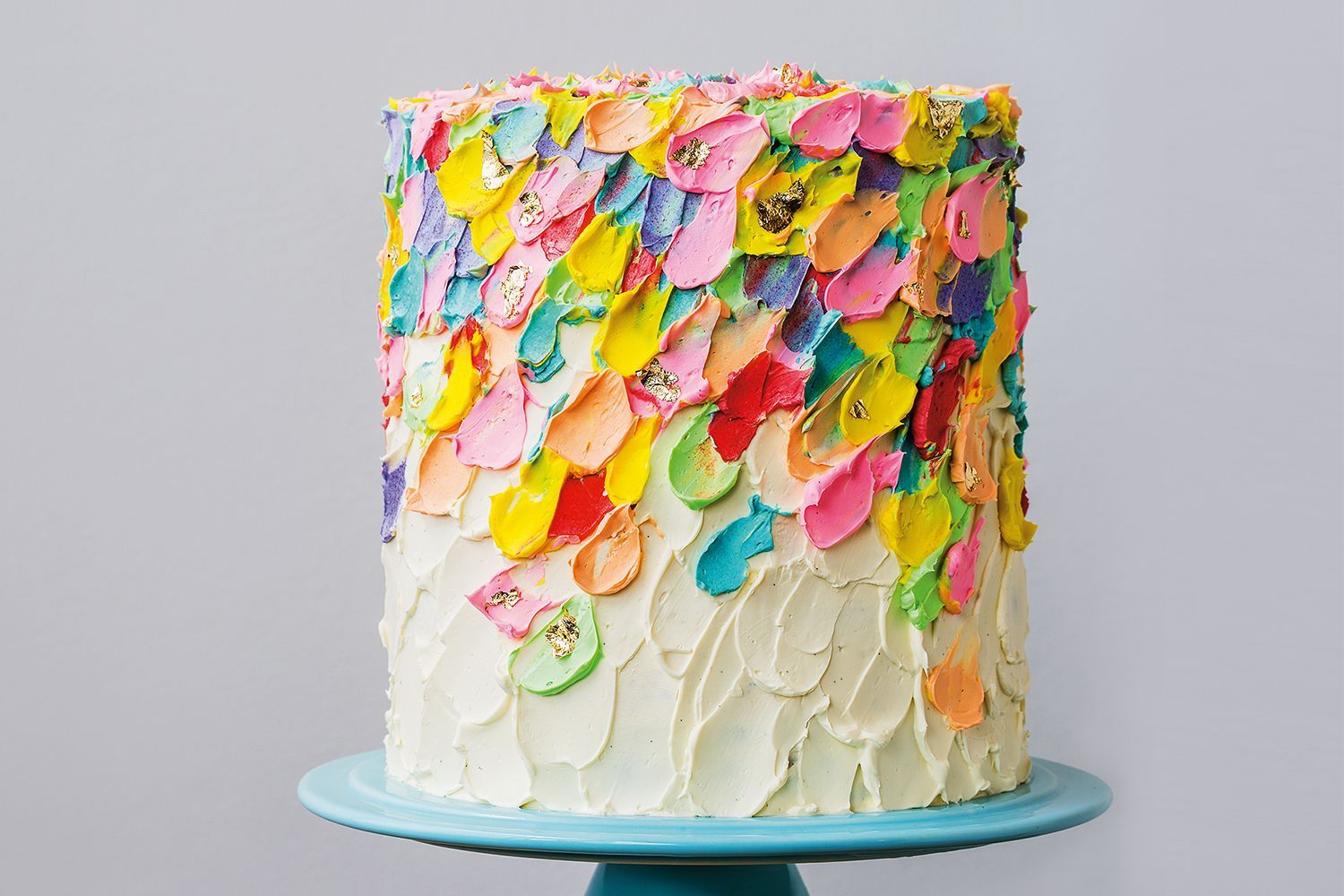
Here are some common types of Buttercream frosting:
These are some popular types of buttercream frosting, each with its own unique characteristics. The choice of buttercream depends on personal preference, desired taste, and the specific application for the frosting.
- American Buttercream: American buttercream is the most basic and straightforward type of buttercream frosting. It is made by creaming together butter, powdered sugar, vanilla extract, and a small amount of milk or cream. It has a sweet and creamy flavor, and its texture can vary from light and fluffy to dense and rich, depending on the ratio of butter to sugar. American buttercream is versatile and can be easily flavored and colored.
- Swiss Meringue Buttercream: Swiss meringue buttercream is a light and silky frosting made by heating egg whites and sugar over a double boiler until the sugar dissolves. The mixture is then whipped into stiff peaks and cooled before adding butter and flavorings. Swiss meringue buttercream has a smooth and velvety texture with a less sweet taste compared to American buttercream. It can be flavored with various extracts, fruit purees, or chocolate.
- Italian Meringue Buttercream: Italian meringue buttercream is similar to Swiss meringue buttercream but uses a different technique. It involves making a hot sugar syrup and pouring it into whipped egg whites, creating a stable meringue. Butter and flavorings are then incorporated into the meringue to create a smooth and fluffy frosting. Italian meringue buttercream has a light and airy texture and a luxurious taste. It is often used for its stability in decorating wedding cakes.
- French Buttercream: French buttercream is a rich and decadent frosting made by combining egg yolks, sugar syrup, and butter. The mixture is cooked over heat and then whipped until light and fluffy. French buttercream has a silky and creamy texture with a pronounced buttery flavor. It is delicate and best suited for filling and frosting cakes rather than intricate decorations.
- Ermine Buttercream (Flour Buttercream): Ermine buttercream, also known as flour buttercream or cooked flour frosting, is made by cooking flour and milk into a thick paste, which is then cooled before being blended with butter and sugar. It has a smooth and creamy consistency and a slightly less sweet taste compared to other buttercreams. Ermine buttercream is stable and holds up well in warm weather.
Advantages and disadvantages of using Buttercream
Advantages:
- Versatile and easy to work with.
- Can be flavored, colored, and piped into various designs.
- Smooth and creamy texture.
- Tastes delicious and is loved by many.
Disadvantages:
- Can be prone to melting in warm weather.
- May not hold intricate designs as well as firmer frostings.
- Sensitive to temperature changes, which can affect stability.
2. Fondant as a cake frosting or icing:
Fondant is a pliable icing made from sugar, water, and flavorings. It provides a smooth and polished appearance when rolled out and draped over the cake. Fondant creates a canvas for intricate designs, sculpted decorations, and personalized details. It is often used for elegant and formal wedding cakes.Rolled Fondant: Rolled fondant is the most commonly used type of fondant for covering cakes. It has a smooth texture and can be rolled out into thin sheets to cover the entire cake. Rolled fondant provides a clean and polished finish and is often used for creating intricate designs, patterns, and decorations on cakes. It is typically made from confectioners’ sugar, gelatin, water, glycerin, and flavorings.

Here are just a few examples of the icing options available for wedding cakes. The choice of icing depends on personal preferences, desired aesthetics, and the overall style and theme of the wedding. Professional cake designers and bakers can provide guidance and expertise in selecting the most suitable icing for a couple’s specific needs.
- Poured Fondant: Poured fondant has a softer consistency compared to rolled fondant. It is a creamy mixture that is poured over the cake, creating a smooth and glossy finish. Poured fondant is often used for petit fours, doughnuts, and other pastries. It can also be used to create a drizzle effect or to cover individual cake pieces.
- Modeling Fondant: Modeling fondant, also known as gum paste or sugar paste, is a firmer type of fondant that is used for creating three-dimensional decorations and intricate details on cakes. It is more elastic and dries harder than regular fondant, making it suitable for crafting figures, flowers, and other sculpted elements. Modeling fondant is often mixed with a gum paste or tylose powder to enhance its strength and pliability.
- Vegan Fondant: Vegan fondant is a type of fondant that is free from animal-based ingredients. It is suitable for those following a vegan lifestyle or those with dietary restrictions. Vegan fondant is typically made using vegetable shortening or plant-based fats instead of animal-based ingredients like gelatin or butter.
- Flavored Fondant: Fondant can also come in various flavors to add an extra dimension to the cake. Flavored fondant is often infused with extracts, essences, or natural flavorings to create a range of tastes, such as vanilla, chocolate, citrus, almond, or other custom flavors.
- Ganache: Ganache is a mixture of chocolate and cream that can be used as a frosting or filling for wedding cakes. It has a rich and velvety texture, creating a luscious and indulgent finish. Ganache can be poured over the cake for a glossy glaze or whipped for a softer texture.
- Royal Icing: Royal icing is made from confectioners’ sugar and egg whites or meringue powder. It dries to a hard finish, making it ideal for intricate piping work, delicate lace designs, or creating three-dimensional decorations. Royal icing is often used for intricate details and to achieve a crisp and elegant look.
- Cream Cheese Frosting: Cream cheese frosting is a tangy and creamy option that pairs well with certain flavors like carrot, red velvet, or spice cakes. It has a smooth and spreadable consistency and adds a touch of richness to the cake.
- Marzipan: Marzipan is an almond-based icing that can be rolled out and draped over the cake. It offers a slightly nutty flavor and can be used for covering the entire cake or creating decorative elements. Marzipan can also be molded and shaped to create intricate designs.
Advantages and disadvantages of using Fondant
Advantages:
- Creates a smooth and polished finish.
- Ideal for intricate designs, sculpting, and covering cakes.
- Can be rolled out into thin sheets and draped over the cake.
- Provides a clean canvas for decorations.
Disadvantages:
- Can have a chewy texture, which may not be preferred by everyone.
- Requires skill and practice to work with for a flawless finish.
- Can be less flavorful compared to other frostings.
- Can crack or tear if not handled carefully.
3. Ganache as a cake frosting or icing
Ganache is a mixture of chocolate and cream that can be used as a frosting or filling for wedding cakes. It has a rich and velvety texture, creating a luscious and indulgent finish. Ganache can be poured over the cake for a glossy glaze or whipped for a softer texture.
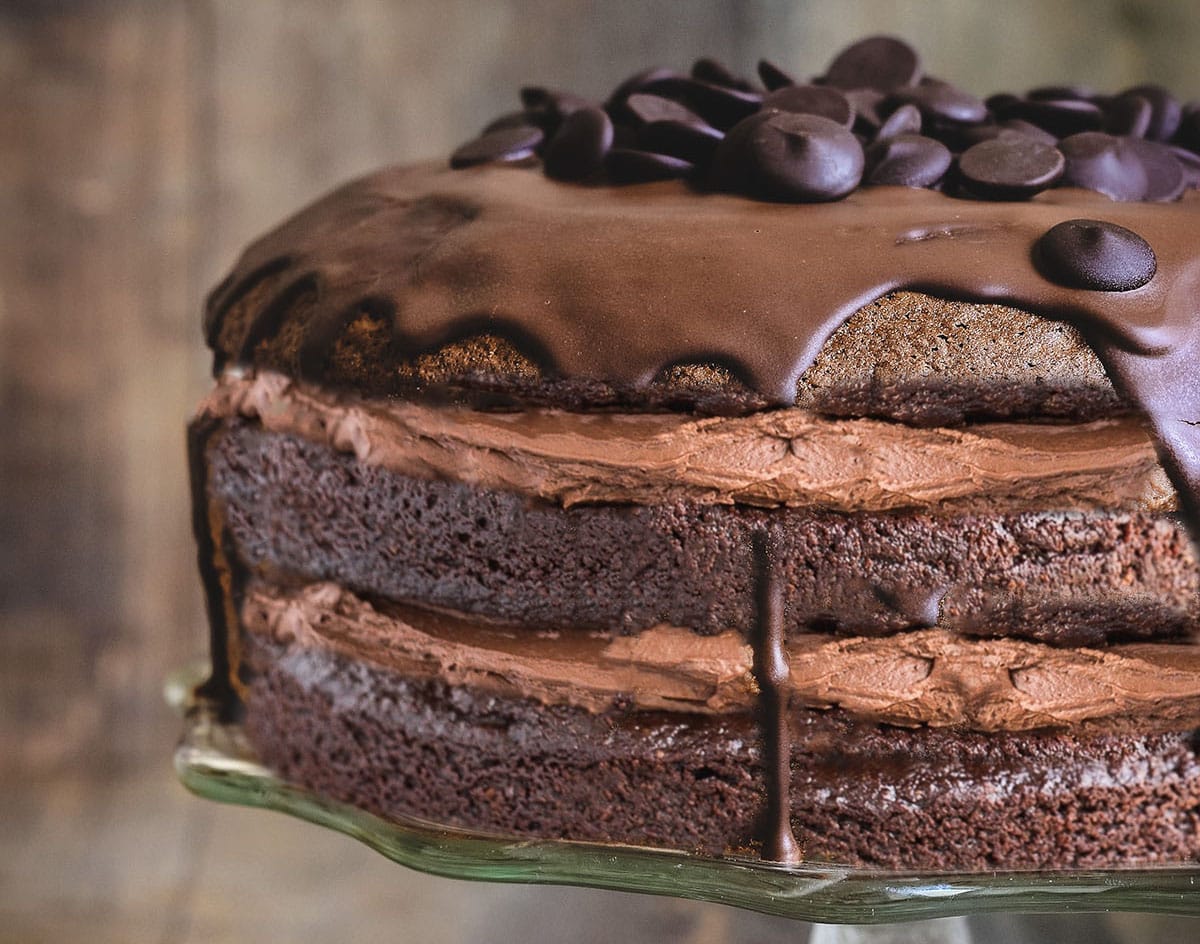
Commonly used types of ganache for cakes
The choice of ganache depends on the desired flavor, texture, and application for the cake. Ganache provides a decadent and versatile option for filling, frosting, or glazing cakes, adding a luxurious touch to any dessert creation.
- Dark Chocolate Ganache: Dark chocolate ganache is made by combining heavy cream with dark chocolate, creating a rich and intense flavor. The ratio of chocolate to cream determines the consistency of the ganache. A higher proportion of chocolate results in a firmer ganache, while a higher proportion of cream produces a softer and more spreadable ganache. Dark chocolate ganache is versatile and can be used for filling, frosting, or glazing cakes.
- Milk Chocolate Ganache: Milk chocolate ganache is made using the same method as dark chocolate ganache but with milk chocolate instead. It has a sweeter and creamier taste compared to dark chocolate ganache. Milk chocolate ganache has a softer texture and is ideal for filling cakes or as a drizzle over desserts.
- White Chocolate Ganache: White chocolate ganache is made with white chocolate, which lacks cocoa solids but contains cocoa butter. It has a smooth and creamy texture with a sweet and vanilla-like flavor. White chocolate ganache is delicate and can be used for filling cakes, as a frosting, or for decorative elements.
- Flavored Ganache: Ganache can be customized with various flavors to complement specific cake flavors or add a unique twist. Common flavor variations include adding extracts like vanilla, almond, mint, or citrus zest to the ganache during the preparation process. Additionally, ganache can be infused with other ingredients such as coffee, liqueurs, spices, or fruit purees to create different flavor profiles.
- Whipped Ganache: Whipped ganache is made by incorporating air into the ganache, resulting in a light and fluffy texture. This type of ganache is created by first preparing a standard ganache and then whipping it until it becomes soft and aerated. Whipped ganache can be used as a frosting or filling for cakes, providing a lighter alternative to the traditional ganache.
Advantages and disadvantages of using Ganache
Advantages:
- Rich and indulgent taste.
- Provides a glossy and smooth finish.
- Can be poured, spread, or piped, depending on consistency.
- Suitable for both filling and frosting.
Disadvantages:
- Firm ganache can be difficult to spread evenly.
- Can harden when chilled, making it less forgiving for mistakes.
- Sensitive to temperature changes.
- Not suitable for intricate decorations.
4. Royal icing as a cake frosting or icing
Royal Icing: Royal icing is made from confectioners’ sugar and egg whites or meringue powder. It dries to a hard finish, making it ideal for intricate piping work, delicate lace designs, or creating three-dimensional decorations. Royal icing is often used for intricate details and to achieve a crisp and elegant look.
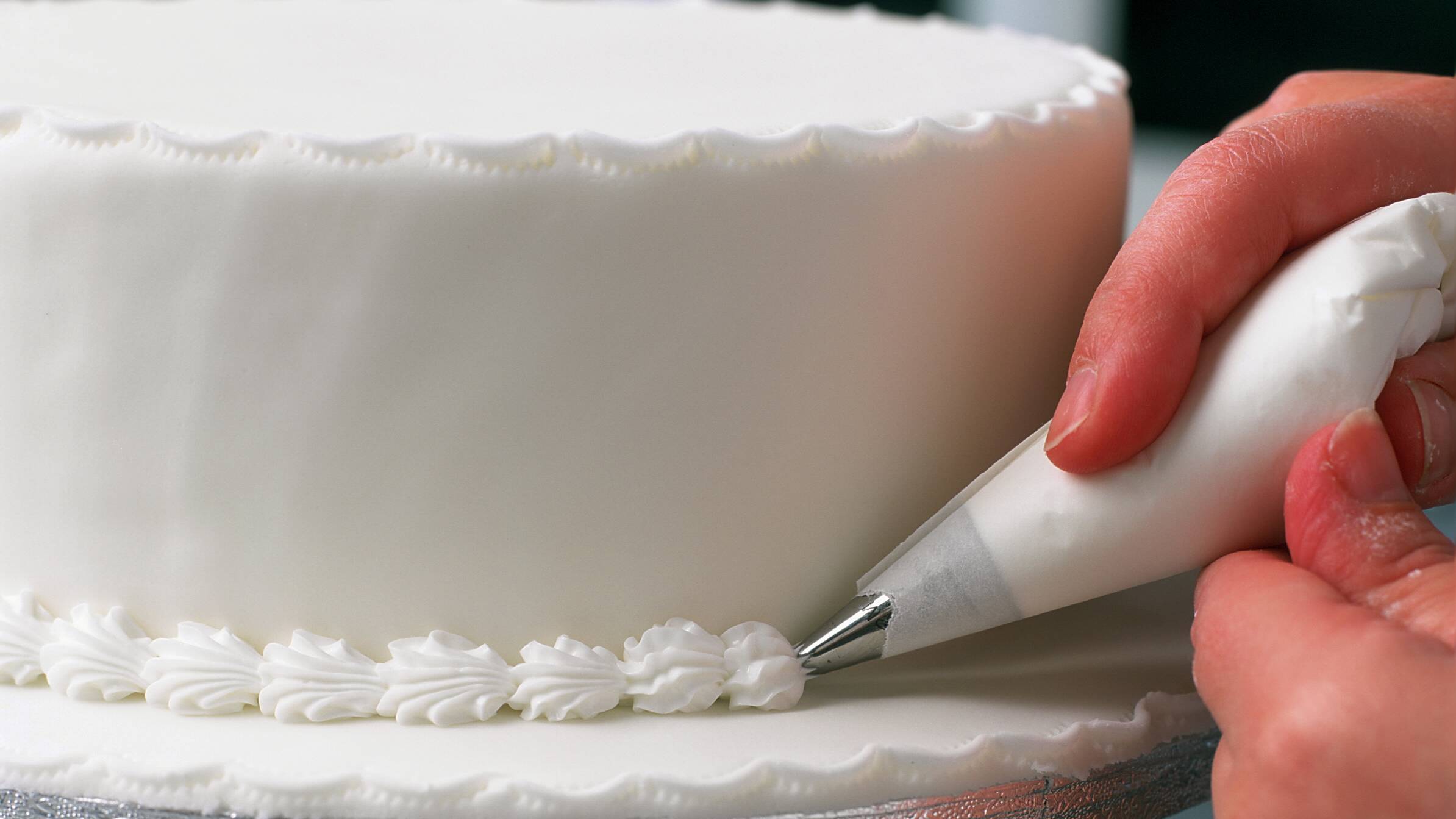
Commonly used types of Royal Icing for cakes.
Each type offers different consistencies and applications, allowing cake decorators to create stunning and intricate designs. The choice of royal icing depends on the desired effect, design requirements, and personal preference.
- Traditional Royal Icing: Traditional royal icing is made by combining powdered sugar with egg whites or meringue powder and a small amount of water or lemon juice. This type of royal icing dries to a hard and smooth finish, making it perfect for intricate piping work, delicate lace designs, and creating three-dimensional decorations. It can be colored with food coloring and flavored with extracts or oils.
- Flood Royal Icing: Flood royal icing is a thinner consistency of royal icing that is used for “flooding” or filling larger areas with a smooth and glossy finish. It is created by adding more liquid, such as water or lemon juice, to traditional royal icing to achieve a pourable consistency. Flood royal icing is commonly used for filling in the outlines created with stiffer royal icing, allowing for smooth and seamless finishes on cookies or cakes.
- Runout Royal Icing: Runout royal icing is a type of royal icing that is used for creating flat, smooth, and delicate decorations on cakes. It is made by thinning down traditional royal icing with more liquid until it reaches a pourable consistency. Runout royal icing is commonly used to create delicate flowers, intricate lace designs, or intricate piping details that require a smoother finish.
- Brush Embroidery Royal Icing: Brush embroidery is a technique where royal icing is applied to the cake with a brush to create a delicate, lace-like effect. The icing is piped onto the cake, and then a brush is used to gently blend and spread the icing, creating a textured and lace-like appearance. Brush embroidery royal icing can be used to decorate wedding cakes or create intricate floral designs.
- Lace Royal Icing: Lace royal icing is a specific type of royal icing that is used to create delicate lace designs on cakes. It is made by piping a lace pattern onto a silicone or lace mat and allowing it to dry completely. Once dry, the lace design can be carefully peeled off the mat and attached to the cake for a beautiful and intricate decorative effect.
Advantages and disadvantages of using Royal icing
Advantages:
- Dries to a hard, smooth finish.
- Ideal for intricate piping work and detailed decorations.
- Can create three-dimensional elements.
- Long shelf life once dried.
Disadvantages:
- Can be quite sweet and not as flavorful as other frostings.
- Hard texture may not appeal to everyone.
- Difficult to fix mistakes once it hardens.
- Requires skill and practice to achieve desired result
5. Cream Cheese Frosting for cakes
Cream cheese frosting is a tangy and creamy option that pairs well with certain flavors like carrot, red velvet, or spice cakes. It has a smooth and spreadable consistency and adds a touch of richness to the cake.
Cream cheese frosting is a popular choice for cakes and other baked goods due to its rich and tangy flavor. There are different variations of cream cheese frosting that can be used to enhance the taste and texture. Here are some common types of cream cheese frostings:
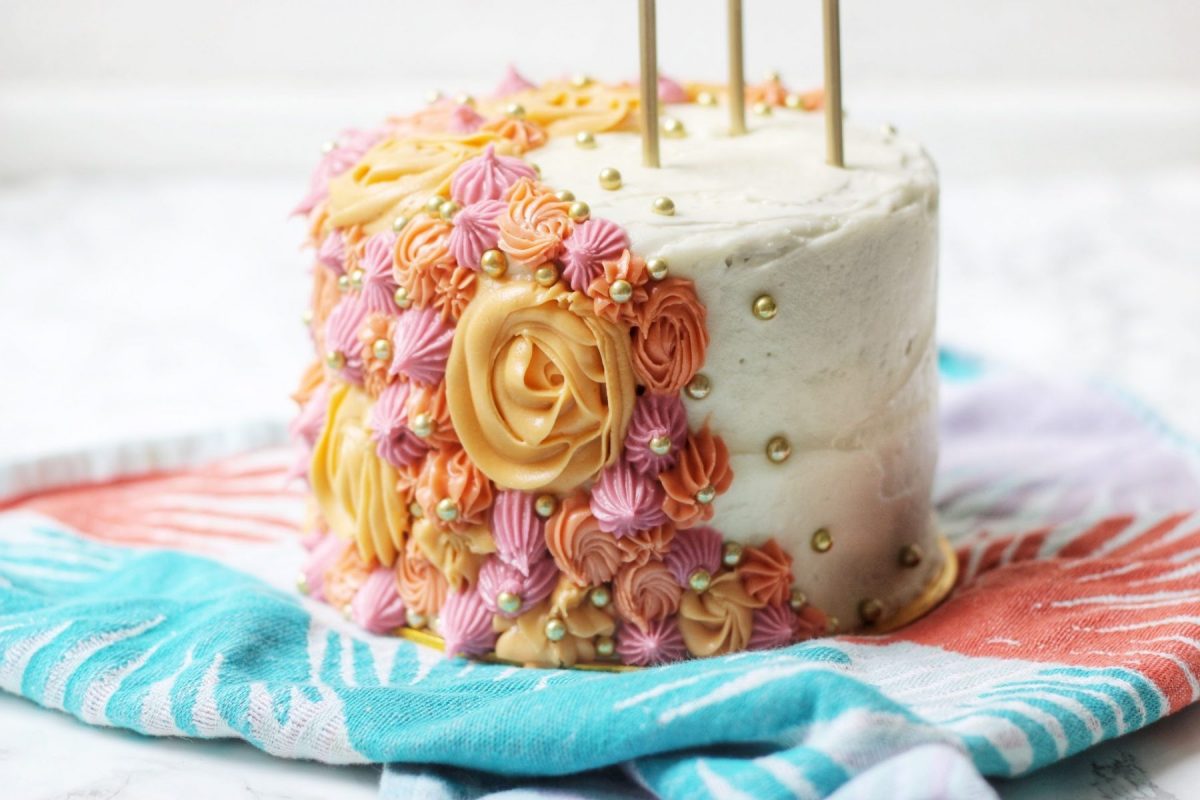
Common types of cream cheese frosting for cakes
The choice of cream cheese frosting depends on personal preference, the type of dessert being prepared, and any specific dietary requirements.
- Classic Cream Cheese Frosting: Classic cream cheese frosting is made by combining cream cheese, butter, powdered sugar, and vanilla extract. This traditional recipe creates a smooth and creamy frosting with a tangy flavor. The ratio of cream cheese to butter can vary depending on the desired consistency and richness. It is commonly used to frost carrot cakes, red velvet cakes, or cinnamon rolls.
- Whipped Cream Cheese Frosting: Whipped cream cheese frosting incorporates whipped cream into the classic cream cheese frosting recipe. This variation lightens the texture of the frosting and makes it fluffier. Whipped cream cheese frosting has a light and airy consistency and is perfect for topping cupcakes or as a filling for layer cakes.
- Stabilized Cream Cheese Frosting: Stabilized cream cheese frosting is made by adding stabilizing agents such as gelatin or cornstarch to the classic cream cheese frosting recipe. These ingredients help the frosting to hold its shape better and prevent it from becoming too soft or runny. Stabilized cream cheese frosting is ideal for piping decorative designs or for warm weather conditions where a firmer consistency is desired.
- Flavored Cream Cheese Frosting: Cream cheese frosting can be easily customized with various flavors to add a twist to your baked goods. Popular flavor variations include adding citrus zest, cocoa powder, espresso, cinnamon, or even extracts like almond or coconut. These flavorings can be incorporated into the frosting along with the cream cheese, butter, and powdered sugar.
- Vegan Cream Cheese Frosting: Vegan cream cheese frosting is a dairy-free alternative that mimics the taste and texture of traditional cream cheese frosting. It is made using plant-based cream cheese substitutes, such as those made from cashews or soy-based products. Vegan cream cheese frosting is perfect for individuals with dietary restrictions or those following a vegan lifestyle.
Advantages and disadvantages of using cream cheese frosting
Advantages:
- Tangy and creamy flavor.
- Complements certain cake flavors like carrot or red velvet.
- Smooth and spreadable consistency.
- Adds richness and depth to the overall taste.
Disadvantages:
- Less stable compared to buttercream, especially in warmer temperatures.
- Requires refrigeration due to the cream cheese content.
- Limited in terms of intricate designs and piping work.
- Can become too soft if over-mixed or if the butter and cream cheese are not properly blended.
6. Marzipan
Marzipan is an almond-based icing that can be rolled out and draped over the cake. It offers a slightly nutty flavor and can be used for covering the entire cake or creating decorative elements. Marzipan can also be molded and shaped to create intricate designs.
Marzipan is a sweet almond-based paste that is often used in cake decorating and confectionery. There are different types of marzipan available, each with its own characteristics and uses.
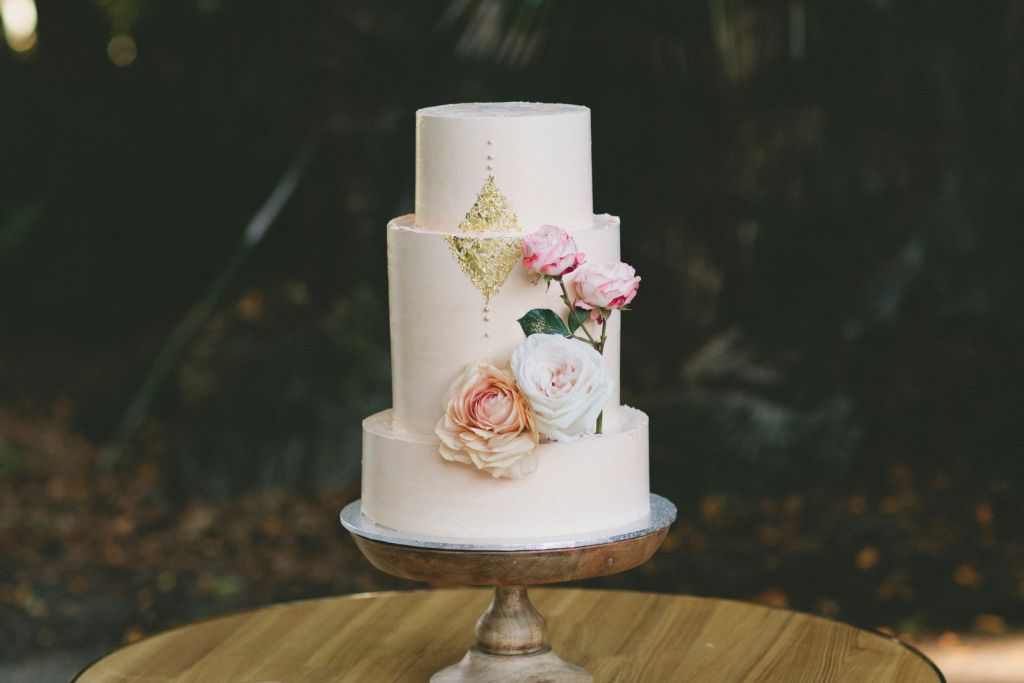
Types of Marzipan for cakes:
- Traditional Marzipan: Traditional marzipan is made from finely ground almonds, sugar, and sometimes almond extract. It has a smooth and pliable texture, making it easy to roll out and shape. Traditional marzipan is commonly used to cover cakes, create decorative figures, or mold into intricate shapes.
- White Marzipan: White marzipan is similar to traditional marzipan but without the addition of food coloring. It has a pale ivory or white color and a delicate almond flavor. White marzipan is often used for wedding cakes or special occasion cakes where a pure white appearance is desired.
- Colored Marzipan: Marzipan can be easily colored with food coloring to create a range of vibrant and pastel shades. Colored marzipan is ideal for adding decorative elements or creating themed cakes. It can be used to mold flowers, shapes, or to cover specific parts of the cake for a visually appealing design.
- Flavored Marzipan: Marzipan can be infused with various flavors to enhance its taste. Common flavor variations include adding extracts like rosewater, orange blossom water, or other natural flavorings such as chocolate, coffee, or fruit essences. Flavored marzipan provides a unique twist to traditional almond flavor and adds complexity to cake designs.
- Vegan Marzipan: Vegan marzipan is a type of marzipan made without animal-based ingredients. It is suitable for individuals following a vegan lifestyle or those with dietary restrictions. Vegan marzipan typically uses alternative sweeteners and binders in place of eggs or honey.
Advantages and disadvantages of using Marzipan
Advantages:
- Dries to a hard, smooth finish.
- Ideal for intricate piping work and detailed decorations.
- Can create three-dimensional elements.
- Long shelf life once dried.
Disadvantages:
- Can be quite sweet and not as flavorful as other frostings.
- Hard texture may not appeal to everyone.
- Difficult to fix mistakes once it hardens.
- Requires skill and practice to achieve desired result
If you’re looking for inspiration and guidance in selecting the perfect wedding cake for your special day you may wish to embark on a journey through our curated selection of 100 wedding cake ideas and designs. Let your imagination soar as you explore the possibilities and find the perfect inspiration for creating a cake that will be an unforgettable highlight of your wedding day.
